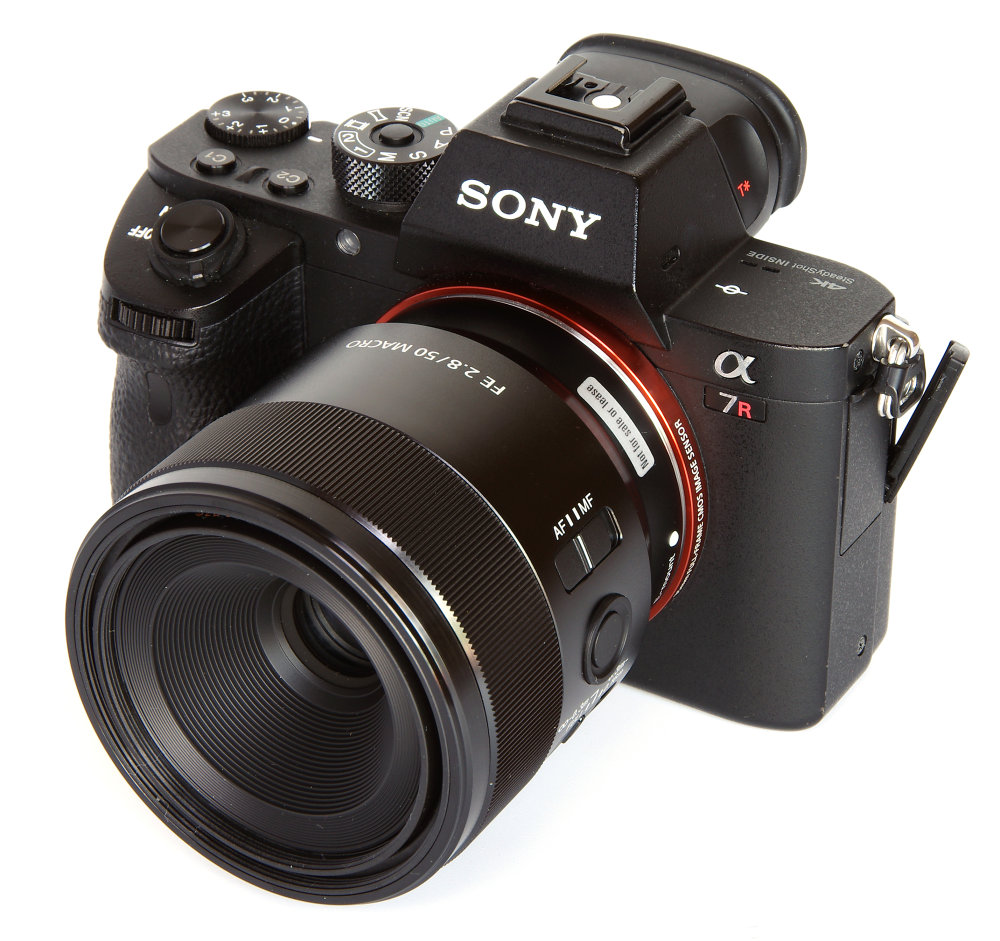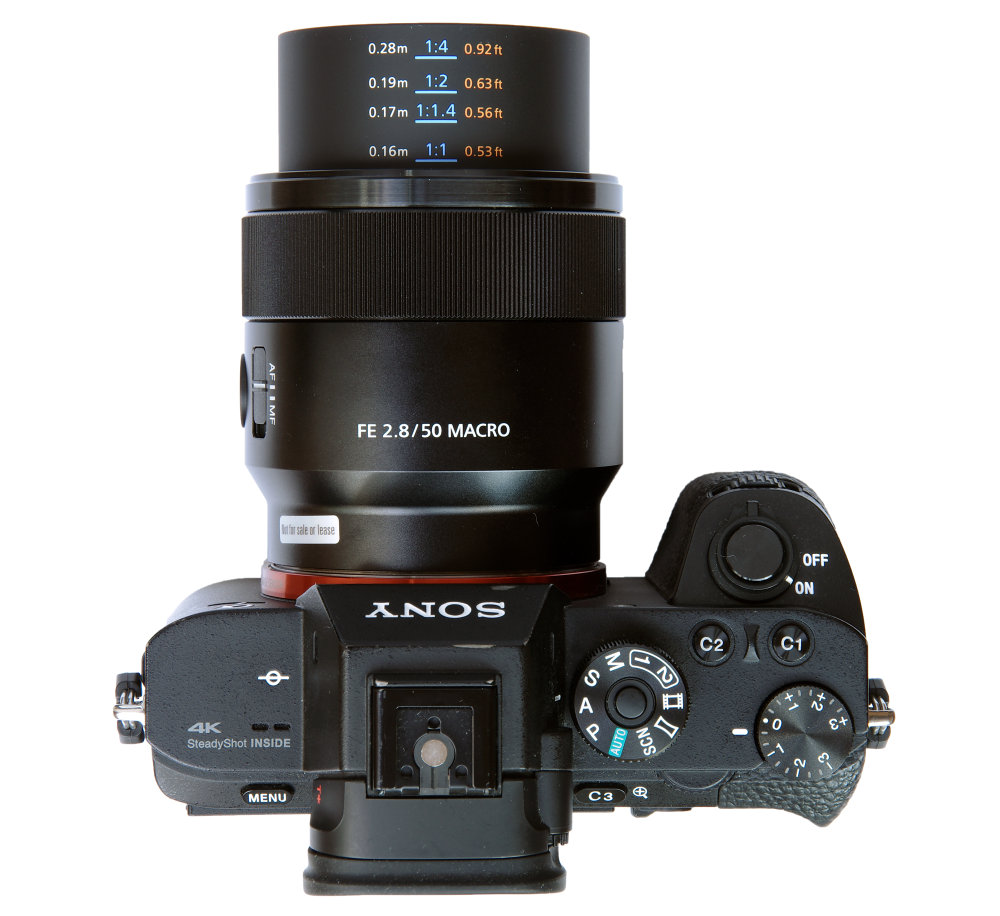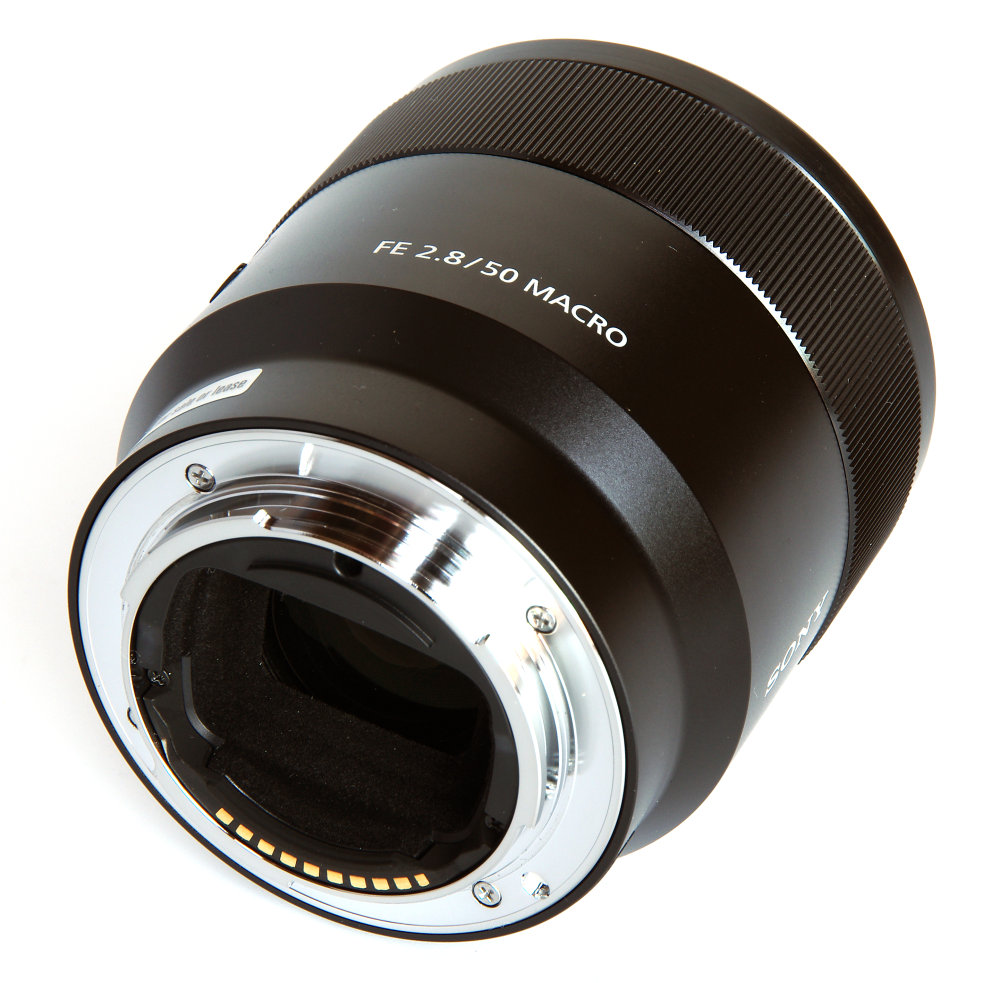Sony FE 50mm f/2.8 1:1 Macro Review
Sony FE 50mm f/2.8 Macro Handling and Features
The lens is compatible with Sony FE format full frame sensor cameras and also the APS-C models, in the latter case, the field of view becoming a “35mm-equivalent” of 75mm. The lens is reviewed here using the Sony Alpha A7R II body.
There is no supplied lens hood, but the front element is quite deeply recessed anyway and it is well protected from unwanted glare. A 55mm filter thread is provided for the attachment of filters, hood or other accessories. Weight is a modest 236g, helped by the extensive use of high quality plastics. A welcome feature is dust and moisture resistance, freeing us to brave the elements in search of images.
Lens construction is 8 elements in 7 groups. There is one aspheric element, plus one using ED (extra low dispersion) glass.
There is a wide manual focusing ring that operates electronically. This is silky smooth to operate, but has such a long travel that it is not really a viable way to work. Behind this there are three controls. The upper one is the usual AF/MF switch. The middle one is a focus lock button that offers another way to focus, lock focus and then recompose to shoot. The other way is of course a half pressure on the shutter release button, which also locks the point of focus. The final, lower control selects the working range of the AF, either the full range, infinity to 0.3m or 0.3 to 0.16m.
AF locks on reliably, but is really quite slow. There can also be some hunting, especially at closer distances. As we focus closer, the lens does extend, although there is no rotation of the front element. This reveals macro distances that are engraved on the barrel, also showing magnification ratios. The lens focuses down to 0.16m (0.53 feet), a maximum magnification of 1.0x or 1:1. This is also referred to as “life size” indicating that an object, say, 10mm long would form an image 10mm long on the sensor.
The aperture is formed by a diaphragm with 7 blades. Sony suggest this makes a rounded aperture, but in fact the flat edges can be clearly seen. The lens works at the taking aperture rather than stopping down when the shutter release is pressed. This is something that we have seen before and it does raise the question as to whether focusing accuracy is maintained at smaller apertures as the light falling on the sensor is reduced. It does seem to be merely a theoretical concern though as the camera continues to focus well even at f/16.
It is interesting that the apertures stop at f/16, presumably because diffraction will reduce the sharpness beyond that point to an unacceptable degree. It can be good to have the choice though, as there is limited depth of field at macro distances.
There is no doubt that handling is excellent. Focus locks on reliably, the image in the viewfinder or on the monitor is clear and it is a pleasure to enjoy again the simplicity of just having that one standard lens to shoot with. A wide variety of subjects can be attempted.
Add your message
Please login here or if you've not registered, you can register here. Registering is safe, quick and free.
photodo Stats
428 MTF tests
74 in-depth photodo reviews
100+ users join each day
Help the lens community by reviewing or rating a lens today via our lens search
Latest Lens Reviews
- Chinon 28mm f/2.8 Vintage Lens Review
- Canon EF 70-200mm f/4L IS II USM Lens Review
- Samyang AF 85mm f/1.4 EF Review
- Sigma 70mm f/2.8 DG Macro Art Review
- Samyang AF 24mm f/2.8 FE Review
- Meike 50mm f/1.7 Review
- Tamron 70-210mm f/4 Di VC USD Review
- Lensbaby Burnside 35mm f/2.8 Review
- Asahi Super Takumar 50mm f/1.4 Review
- Asahi Super-Multi-Coated Takumar 135mm f/3.5 Review



